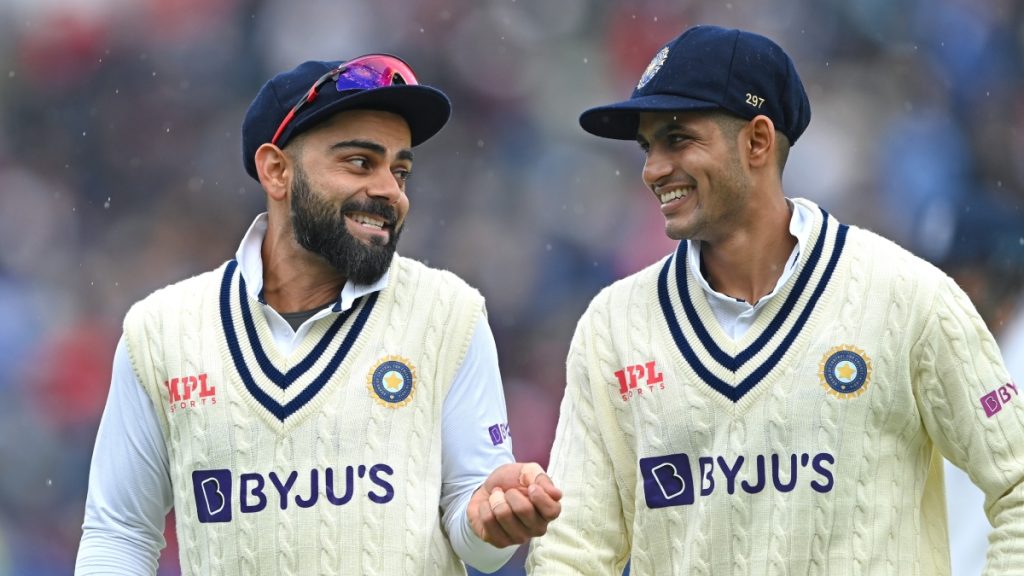In the world of cricket, where legends are born from the sheer grit of talent and the relentless pursuit of excellence, the comparison between Virat Kohli and Shubman Gill at the age of 25 offers a fascinating glimpse into the evolution of cricketing prowess. As we delve into their statistics and performances, we’re not just looking at numbers; we’re exploring the narrative of two careers that, while distinct, share a common thread of ambition, skill, and the undying spirit of competition. This exploration isn’t merely about who scored more runs or hit more centuries; it’s about understanding the journey of two cricketers who, at a pivotal age, were setting the stage for what could be their legacy in the sport.
At the age of 25, both Virat Kohli and Shubman Gill had already made significant impacts on international cricket, though their statistical footprints show some differences and similarities:
Overall Runs and Averages: By the age of 25, Kohli had amassed 6,681 runs across formats at an average of 42.93, showcasing his early dominance, particularly in ODIs where he scored 4,919 runs in 112 innings at an average of 52.3. Gill, at the same age, had scored 4,398 runs at an average of 41.38, indicating a strong start but with room for improvement to match Kohli’s early career numbers.
Centuries: Kohli’s century tally at 25 was notably higher, especially in ODIs, where his ability to score centuries in various conditions was evident. Gill, while impressive with seven centuries across formats by 24, still had fewer than Kohli at the same age, but his trajectory suggests a similar path if not more prolific in terms of centuries given his start.
Test Cricket: Kohli’s reliability in Test cricket at a young age was more pronounced than Gill’s. Kohli’s average in Tests was higher, indicating a more robust performance against the longer format’s challenges. Gill, while showing promise, especially with a double hundred, had a lower average, suggesting there’s still ground to cover in terms of consistency and adaptation to different Test conditions.
ODI Performance: Both players have shown a preference for ODIs, with Kohli setting a high benchmark early in his career. Gill’s performances, particularly his ability to score quickly, hint at a similar if not greater potential in this format, given his strike rates and centuries.
T20Is: In T20Is, both players share similarities in their approach and stats at 25, with Kohli’s early career also marked by significant contributions in this format, including pivotal performances in World Cups. Gill’s journey in T20Is, while showing promise, needs more consistent high-impact performances to fully match Kohli’s early T20 exploits.
Public Sentiment and Comparisons: From social media posts, there’s a clear fascination with comparing Shubman Gill to Virat Kohli, often highlighting Gill’s rapid rise and specific achievements like becoming India’s youngest to score a 150 in ODIs. However, there’s also a critical view on Gill’s performance in certain conditions, suggesting not all fans or analysts see him as Kohli’s direct successor just yet.
Future Prospects: Gill’s statistics and the way he’s been performing suggest he’s on a path that could see him challenge or even surpass some of Kohli’s records if he maintains his form and improves in areas where Kohli excelled, like Test cricket consistency. However, Kohli’s early career was marked by an almost relentless consistency and adaptability across formats, which Gill will need to emulate to be considered in the same league.
Final verdict
While Shubman Gill shows immense promise and has already achieved milestones that echo Kohli’s early career, Virat Kohli at 25 had set a benchmark in terms of consistency, especially in Tests and ODIs, which Gill is currently working towards. The comparison is not just about numbers but also about the impact and consistency over a period, where Kohli’s early career stands slightly ahead, but Gill’s trajectory suggests he has the talent and skills to close this gap with time.

